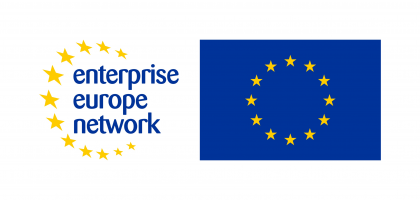Events calendar
Contacts:
Association GS1 Lithuania
Ph.: (+370 5) 261 4532
E-mail: gs1@gs1.lt
www.gs1lt.org
What are bar codes?
The technology of bar codes is a pattern of light and dark bars (segments) of set dimensions laid out according to certain rules designated for presentation of data in a form suitable for automatic scanning. The GS1 numbering system of goods is intended for automation of payments and accounting in retail trade.
Thanks to the technology:
- the customer service has improved, payments have become faster, the number of errors decreased, and the cashier's work has become easier;
- the process of trade management has become easier, too, because at any time one can receive all information about any item of commodities from the computer system of the shop;
- the commodity forwarding and accounting procedures have become simpler;
- the same numbers can be used in the production management system, when deals are concluded, or when various logistic operations are carried out.
Despite the immense application possibilities of bar codes, nowadays they are mostly used for identification of goods in the production, transportation and sale processes. At present the choice of code is quite wide, and it is ever increasing.
In most cases, a 13-digit GS1-13 number is used for numbering commodities, or a reduced 8-digit GS1-8 number for marking very small items. Beside these two numbers, various modifications are possible. The mostly spread are the following:
- numbers for goods of variable yield (weight);
- numbers intended for marking printed matters, discount cards, shipments of goods, company data in data bases, etc. On the goods, these numbers are shown in a digital and a bar code form, where two bars ad two spaces of varying size are allotted to every digit. The principles of bar coding and all other technical requirements applicable to symbols marked on goods are laid out in respective international standards and national standards based on the international ones. This ensures that the number of a commodity marked in any country of the world can be easily scanned in any shop anywhere in the world. Furthermore, the bar code printing and scanning machines produced in various countries and by various companies are compatible (to be exact, they should be compatible, and one must check it before buying the apparatus) with the above-mentioned standards.
All the requirements applicable to numerical symbols of goods in Lithuania are laid out in detail in the Lithuanian standard LST GS1 797 + AC: 1998 "Bar codes. Technical requirements applicable to symbols. GS1/UPC", compiled on the basis of the corresponding European standard. Before buying a bar code printing equipment, one must make sure that it guarantees the quality of printed symbols as required by the standard, whereas the list of codes recognized by the scanning equipment contains GS1/UPC, ITF-14 and EAN-128 codes used in various trade automation processes.













